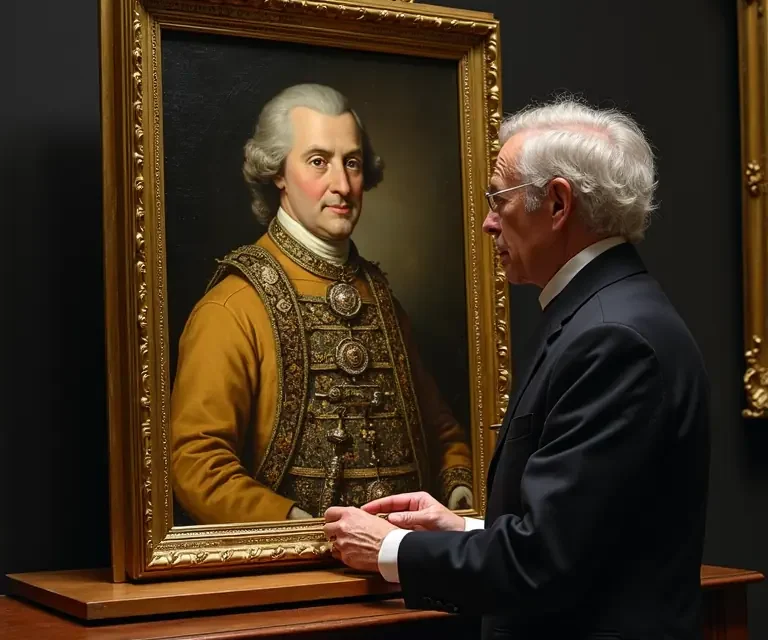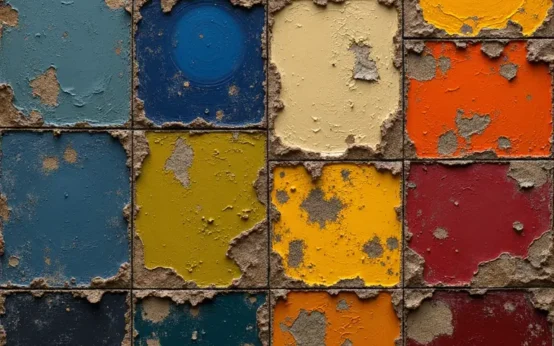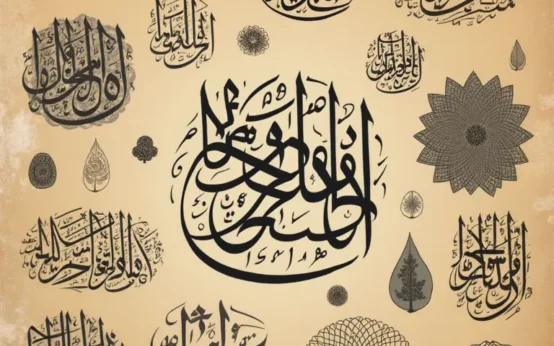For centuries, long before photography captured fleeting moments with chemical precision, artists and artisans sought ways to replicate human likeness mechanically. This pursuit culminated in the fascinating, and now largely forgotten, art of automaton portraits – self-operating mechanical figures designed to resemble specific individuals. These weren’t mere dolls; they were complex exercises in engineering, artistry, and social commentary, reflecting the anxieties and aspirations of their time. This article delves into the curious science behind these mechanical marvels, exploring the techniques used to achieve likeness, the social context that fueled their creation, and the reasons why this art form largely faded into obscurity.
The Precursors: From Ancient Statues to Early Clockwork
The desire to animate the inanimate is ancient. Myths across cultures feature statues brought to life – Pygmalion’s Galatea being perhaps the most famous example. While these are stories, the impulse to *create* life-like representations is demonstrably real, visible in the meticulous detail of ancient sculptures. However, the true genesis of automaton portraits lies in the development of clockwork mechanisms.
Early clockwork, originating in medieval Europe, was initially focused on astronomical clocks and religious automata – figures that enacted biblical scenes. These were elaborate displays of technical skill, but they lacked the individualized portraiture that would become central to the later tradition. The 13th and 14th centuries saw increasing sophistication in clockwork, driven by the need for accurate timekeeping and a growing fascination with mechanical ingenuity. This groundwork was essential for the development of more complex automata capable of representing individual human forms. You can learn more about the broader history of automata in The Curious Chronicle of Clockwork Toys.
The Golden Age: 18th-Century Automaton Portraiture
The 18th century witnessed the blossoming of automaton portraiture, particularly in France and England. This period coincided with the Enlightenment, an era characterized by a burgeoning interest in science, reason, and the mechanics of the universe. The aristocracy, eager to demonstrate wealth, status, and intellectual curiosity, became the primary patrons of these intricate creations.
Key figures emerged. Jacques de Vaucanson, a French watchmaker and engineer, created several remarkable automata, including a mechanical duck capable of flapping its wings, quacking, and even ‘digesting’ grain. While not a portrait *per se*, Vaucanson’s work demonstrated the level of mechanical sophistication achievable. Later, the Jaquet-Droz family – Pierre, Henri-Louis, and Élisabeth – became renowned for their exceptionally lifelike automata, including the ‘Writer’, ‘Musician’, and, crucially, ‘The Draughtsman’ – all capable of performing complex tasks seemingly autonomously. These weren’t simply programmed routines; they represented a significant leap in mechanical complexity.
The Science of Likeness: Achieving a Resemblance
Creating a convincing likeness wasn’t simply a matter of sculpting a face. It required a deep understanding of anatomy, proportion, and the subtle nuances of human expression. Automaton makers employed several techniques:
- Detailed Sculpting: The head and face were typically crafted from wax, ivory, or wood, painstakingly sculpted to resemble the subject. This required artists with exceptional skill in portraiture.
- Mechanical Expression: The most innovative aspect was the attempt to mimic facial expressions. This was achieved through a complex system of cams, levers, and gears concealed within the automaton’s head. Different cam shapes dictated the movement of the mouth, eyes, and eyebrows, allowing for a limited range of expressions – a nod, a smile, a blink.
- Clothing and Accessories: The automaton’s attire was meticulously recreated to match the subject’s typical clothing and accessories. This added to the overall impression of realism and helped reinforce the sense of identity.
- Movement and Gesture: Beyond facial expressions, the automaton’s body was designed to perform simple gestures, such as raising an arm, bowing, or writing. These movements were carefully choreographed to align with the perceived personality and habits of the subject.
The success of these techniques hinged on the precision of the mechanics. Even a slight misalignment could result in a grotesque or unnatural expression. The creation of a single automaton portrait could take months, even years, and required the collaborative efforts of skilled artisans – sculptors, clockmakers, jewelers, and painters.
The Social Context: Status, Spectacle, and Satire
Automaton portraits weren’t merely technical demonstrations; they were deeply embedded in the social and cultural landscape of the 18th century. They served several purposes:
- Status Symbol: Commissioning an automaton portrait was an extravagant display of wealth and power. Only the very wealthy could afford such a bespoke creation.
- Celebration of Intellectual Prowess: Automata were seen as embodying the Enlightenment ideals of reason and mechanical ingenuity. Owning one demonstrated a patron’s appreciation for science and innovation.
- Memorialization: Automaton portraits could serve as a unique form of memorializing a deceased loved one. The mechanical figure offered a semblance of continued presence, a way to keep the memory of the departed alive.
- Social Commentary & Satire: Not all automata were intended as straightforward portraits. Some were designed to satirize prominent figures or to offer a critical commentary on social and political issues. The mechanical nature of the figure could be used to highlight the perceived artificiality or hypocrisy of the subject.
Public exhibitions of automata were also popular events, attracting large crowds eager to witness these mechanical wonders. These exhibitions served as a showcase for the ingenuity of the automaton makers and provided a platform for social interaction and discussion. The spectacle of a machine mimicking human behavior was both captivating and unsettling.
The Mechanics of Movement: A Deeper Dive
The heart of any automaton was its movement-generating mechanism. While specific designs varied, several core principles were consistently employed. The most common power source was a spring-driven clockwork mechanism. Winding the automaton stored potential energy in the spring, which was then released in a controlled manner to drive the gears and levers that controlled the figure’s movements.
Cams were crucial. These rotating or sliding pieces of shaped metal were designed to convert rotary motion into linear motion. The shape of the cam determined the timing and extent of the movement. For example, a cam shaped like a wave could be used to control the up-and-down movement of the automaton’s mouth, creating the illusion of speech.
Levers and Linkages were used to transmit and modify motion. A series of interconnected levers could amplify or redirect the force generated by the cams, allowing for more complex movements.
Differentials were sometimes employed to coordinate multiple movements simultaneously. A differential allows for independent control of different parts of the automaton, ensuring that the movements are synchronized and harmonious. The detailed mechanics often drew from the study of celestial movements – you can explore this connection in The Curious Chronicle of Celestial Mechanics.
The Decline and Disappearance: Why Were They Abandoned?
Despite their popularity in the 18th century, automaton portraits gradually fell out of favor. Several factors contributed to their decline:
- The Rise of Photography: The invention of photography in the early 19th century provided a far more accurate and affordable means of capturing human likeness. The ability to create a realistic image with a simple click of a button rendered the complex and expensive process of building an automaton portrait largely obsolete.
- Changing Aesthetic Sensibilities: The Romantic movement, with its emphasis on emotion, individuality, and the sublime, shifted aesthetic preferences away from the mechanical and rational. Automata, once seen as emblems of Enlightenment progress, began to be viewed as cold and artificial.
- Loss of Skilled Artisans: The creation of automaton portraits required a unique combination of skills that were difficult to acquire. As demand declined, the knowledge and expertise of the artisans involved were gradually lost.
- Maintenance Challenges: Automata were delicate machines that required regular maintenance and repair. Over time, many automata fell into disrepair due to a lack of skilled technicians to keep them running.
Furthermore, the French Revolution and subsequent political upheavals disrupted the patronage networks that had supported automaton makers. Many workshops were destroyed, and skilled artisans were forced to flee or change professions.
The Legacy: Preservation and Modern Revivals
Although automaton portraiture largely disappeared as a widespread art form, its legacy continues to inspire. Many surviving examples are now housed in museums and private collections around the world, offering a glimpse into a fascinating chapter of technological and artistic history. The Franklin Institute in Philadelphia, the Musée d’Art et d’Histoire in Neuchâtel, Switzerland, and the Smithsonian Institution in Washington D.C. all boast significant collections.
In recent years, there has been a resurgence of interest in automata, fueled by a renewed appreciation for mechanical art and a fascination with the intersection of technology and creativity. Modern artists and engineers are building new automata, often incorporating contemporary materials and technologies. These creations demonstrate that the spirit of automaton portraiture – the desire to replicate human likeness mechanically – remains alive and well.
The study of these historical automata also offers insights into the broader history of technology, art, and social values. They remind us that the pursuit of artificial intelligence and robotic simulation is not a new endeavor, but rather a continuation of a centuries-old quest to understand and recreate the essence of human life.
The echoes of these mechanical marvels can even be heard in the study of acoustics and the design of spaces for optimal sound, a practice with a rich historical connection to automata and their performances – as explored in The Curious Acoustics of Historical Echo Chambers.
Further Exploration: Related Mechanical Arts
The techniques developed for automaton portraits were often applied to other mechanical creations. The creation of automaton birds, for example, shared many of the same challenges and innovations – the need to replicate complex movements, create realistic textures, and achieve a convincing illusion of life. Discover more about these fascinating creations in The Curious Mechanics of Automaton Birds. And don’t forget the historical importance of recipes and their preservation, a parallel pursuit to preserving mechanical knowledge – as detailed in The Curious Chronicle of Lost Recipes.


 The Curious Chemistry of Lost Colors: Pigments, History, and the Art of Remembrance
The Curious Chemistry of Lost Colors: Pigments, History, and the Art of Remembrance  The Surprisingly Consistent Science of Historical Dye Recipes: From Ancient Textiles to Modern Pigments
The Surprisingly Consistent Science of Historical Dye Recipes: From Ancient Textiles to Modern Pigments  The Unexpectedly Precise History of Calligraphy – From Sacred Texts to Modern Art
The Unexpectedly Precise History of Calligraphy – From Sacred Texts to Modern Art